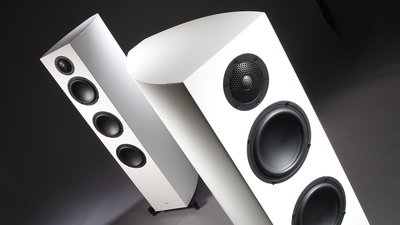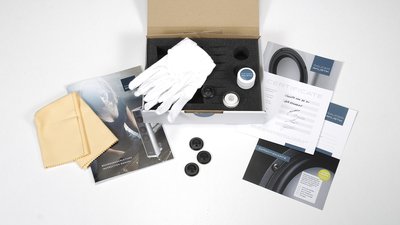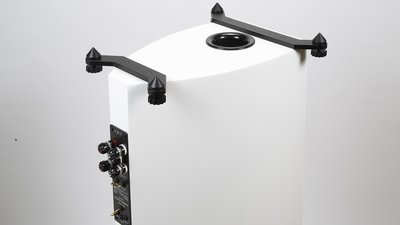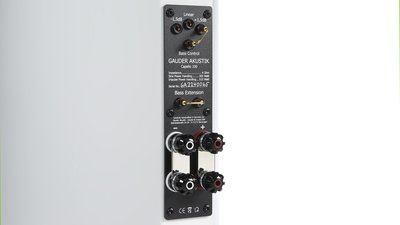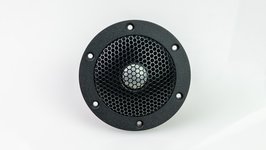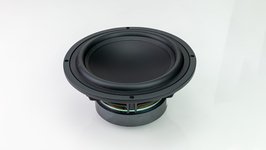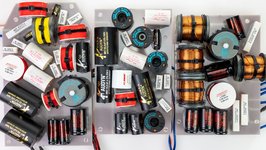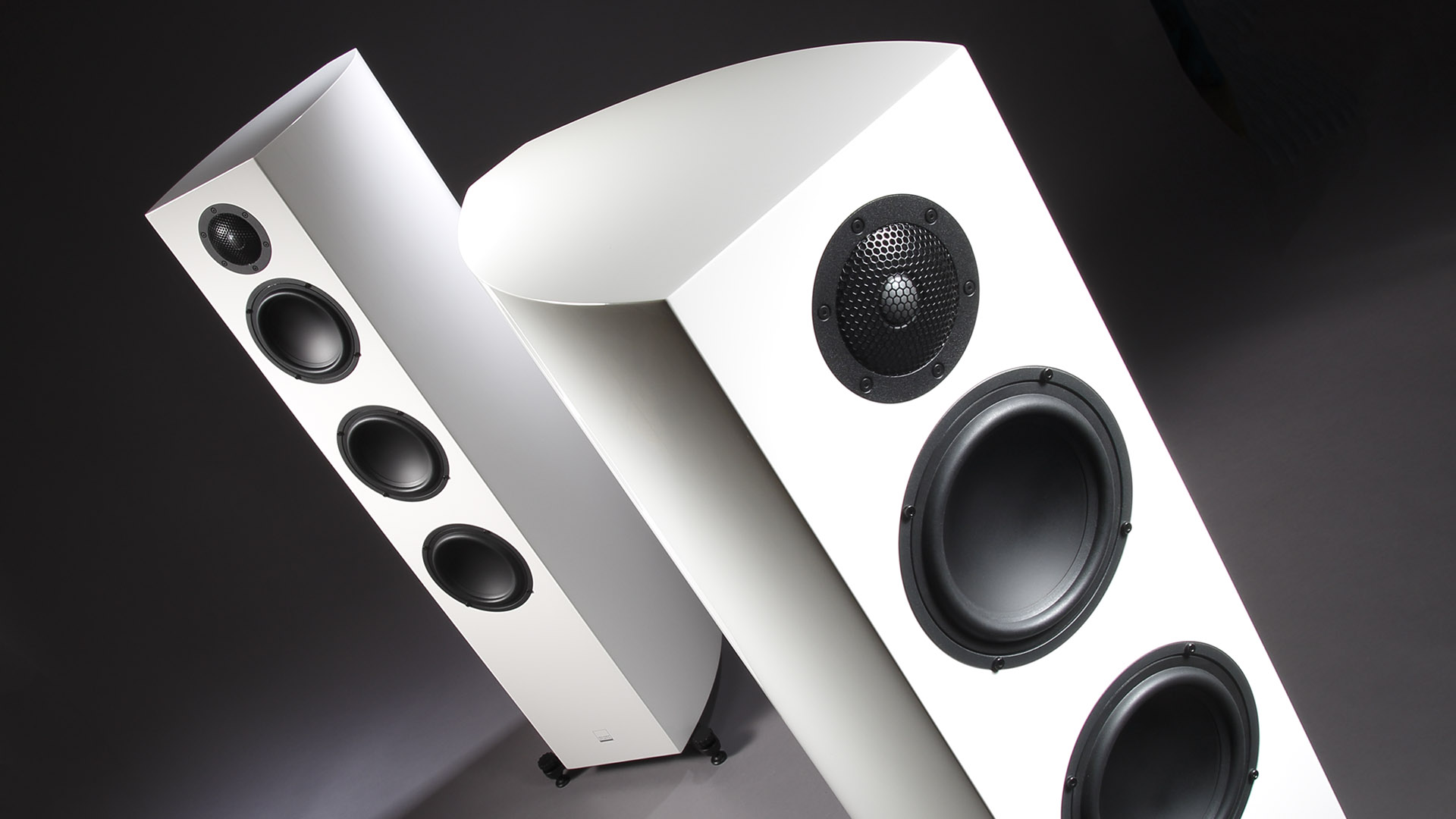
Floorstanding speaker test
Gauder Capello 100 Review
Thorough Renewal – Gauder Akustik is walking down new paths in a number of ways with the Capello series, successor to the Cassiano and Vescova. STEREO reviews the top model Capello 100.
Many of you, dear readers, probably imagine a doctor of physics to be a scientist who is calm, always thinks and acts cool-headed and rationally, and whose passion focuses primarily on numbers, formulas and tables. And probably not as a person made of flesh and blood. One that cannot stop talking enthusiastically about his passion.
Both descriptions apply to Dr. Roland Gauder. The mastermind behind Gauder Akustik sometimes sits in his room for days on end, fiddling with formulas and tables, calculating up and down. Never resting until he has found a solution to the mathematical problem he has identified, which then serves as the basis for his further work.
Temperamental Physicist
And then the other side. When he appears in his best mood, either in front of his employees or, as in our case, in front of the press. With a sparkle in his eye and a combination of pride and passion, he gives a captivating talk about the emergence of his latest creation. In this respect, he is not unlike a new father who presents his newborn child to the world filled to the brim with pride.
And in the case of the brand new Capello series, Roland Gauder has every reason to be proud. After about 16 years of construction, it replaces two previous product lines from Gauder – the Cassiano and the Vescova. In the entirely newly developed speakers, there are not only completely different drivers, but also the latest refinements of the crossover technology Gauder invented with extreme filter slopes and a time correction.
And all that supplemented by a new housing architecture. The newly developed beryllium tweeter in our test model – which can replace the standard aluminum tweeter at any time for a surcharge of 5,000 euros pair price – will be discussed later in detail.
But let‘s start at the very bottom – with the two 17cm woofers of the three-way bass reflex speaker with its double bass system. Their technical parameters were specially adapted to the requirements of the Capello 100. Here, Gauder had the following thoughts during designing them: He ensured a high-pass filtering that cuts all frequencies below the usable frequency band. This allows the cabinet volume to be almost 50 percent smaller compared to the classic crossover design.
Unwanted subsonic frequency components are thus effectively suppressed, which increases the power handling and at the same time reduces the maximum excursion of the drivers. Which in turn has the pleasant side effect of reducing distortion. Since the aluminum diaphragms of the woofers – which are damped on the back via a polymer layer – are decoupled at 144 hertz already, none of this has any effect on the higher frequency ranges.
This systematic early filtering also enables the versatile bass adjustment system, which is almost a standard feature of Gauder speakers by now. This adjustment comes in the shape of a triple plug-in system supposed to influence the entire range of bass reproduction from (theoretical) 20 Hertz up to 150 Hertz in volume. Step 1 is the increase or decrease of the entire range by 1.5 decibels via jumper on the rear terminal.
The second step is the so-called "bass extension system", which provides for a fine adjustment in the range of about 30 to 70 Hertz by means of insertable jumpers. In order to provide a clear path for optimal and undisturbed music enjoyment for the worst cases, one more thing is possible: an optional anti-noise filter can be activated via a jumper if a droning frequency is wreaking havoc in your room.
Are you now asking yourself how to identify and pinpoint such a droning frequency? For this purpose, Gauder released a CD with test frequencies, which you can order from him.
With these measures, the inventive physicist succeeds in implementing a purely analog way of room correction into the loudspeakers. Usually, this and all its benefits are attributed to active digital solutions. To the best of our knowledge, this is quite unique in regards to its thoroughness.
Only The Looks Are The Same
From the front, you can‘t see any difference between the driver responsible for the middle frequencies and the two woofers. Contrary to that, the midrange indeed has a significantly different design in terms of the diaphragm as well as the voice coil and magnet system. This is also necessary, as it is supposed to play clean and seamless up to 3,400 hertz. According to Gauder, the extremely powerful motor used here ensures a remarkable level of resolution in the midrange.
But not only the mechanical and electrical parameters of the driver are different, while it is built with an aluminum diaphragm like the woofers. Gauder also gave the midrange its own closed and heavily damped chamber. That aims to ensure that it can pursue its own tasks undisturbed by the busy events above and below its working range.
According to common opinion, the previously used ceramic membranes are somewhat superior to models made of aluminum. Gauder states that the main reason for the change is the clearly better impulse behavior of the new drivers – for many years, that has been a point that he considers extremely important for a natural reproduction of music and on which he thus directs his primary focus. After all, music consists almost exclusively of impulses!
Newton was Right
The physicist of course even took good old Newton and his discoveries into account during his thought process. This particularly manifests itself in the two available tweeters, either made of aluminum or of beryllium. Great importance was thus given to the magnetic driving force and a narrow air gap on the one hand, and on the other hand to the lowest possible moving mass.
Concerning that, it is important to know that not only the diaphragm weight counts, but the sum of the diaphragm, voice coil and voice coil former. The 25 millimeter tweeters were developed with this in mind and are now produced in Germany. The aluminum tweeter already has a lower moving mass than the ceramic and diamond tweeters used previously; the beryllium version, available for 5,000 euros per pair on top, ranges even lower in that regard.
Before we turn to the crossover technology – which is extraordinary in Gauder speakers –, we move to the drop-shaped cabinet, which is beneficial to the acoustics and reinforced on the inside at the main resonance points. In contrast to the models of the DARC series, it does not consist of individual aluminum ribs, but of a more traditional thick layer of MDF.
It gains some additional stiffness through the extremely smooth multi-layer finish, but does not reach the top values from the also significantly more expensive DARC series. The bass reflex port is deliberately placed at the bottom of the speaker to ensure the most uniform room agitation possible.
Now, let‘s take a look at what usually remains hidden from our eyes. That which is quite literally the crossover point for the best possible sound, once the drivers and cabinet have been selected: the crossover. In this case even three of them, as each section goes to work separately for bass, midrange and treble.
To elicit the best possible performance from an orchestra and to ensure that the individual players interact optimally, that is the task of a conductor. A crossover acts not wholly unlike a conductor. Roland Gauder develops his crossovers according to the principle that no driver should interfere with the working range of another. A standard that cannot be met with a conventional 6 or 12 dB crossover. According to Gauder, that is one of the main reasons why loudspeakers built with such crossovers do not have a clear acoustic center and therefore fall short in terms of spatial imaging.
Therefore, it‘s even better when Gauder succeeds in building an analog filter with a 50 decibel slope that is supposed to exclude these disadvantages. Instead of the usual overlap in the frequency range of about three octaves, the speakers only have an overlap in a range of about 1/8 octave, according to the physicist, which leads to an almost ideal point source. But he has given something more to the crossover of the Capello 100, which consists of 56 components from IT and Mundorf as well as an in-house Clearwater wiring in the "Double Vision" version: a symmetrization, which is supposed to bring noticeable sonic improvements especially to the midrange. And furthermore also minimize the feedback of the speaker to the amplifier.
Via the Capello, Cologne blues legend Richard Bargel was the first artist to draw us deep into the music of his latest album, "Dead Slow Stampede". The record is cleanly produced, but without the slightest hint of being sterile. We were downright sucked right into the music the longer we listened to it.
Space, Details, Timing
"Break The Chain", for example, is reminiscent of the Stones‘ version of "You Gotta Move". The Capello knew how to skillfully portray the record‘s rich musical range, which ranges from blues to country. Bargel‘s voice is very much in the foreground on "Heart Shine Girl" or in the powerful "Grizzly Bear", which the Gauder really highlights in a rarely experienced clarity.
But the speaker also felt at home with jazz, as was clearly audible. The 1956 album "Colossus" from Sonny Rollins – remastered by Rudy van Gelder – sounds airy, powerful, spatially precise and tangible to such an extent that we are lost in delight. The old legend plays his saxophone so lightly and skillfully on "St. Thomas", that, together with the driving backing rhythm, even jazz newbies can no longer ignore that something extraordinary is being offered here. And when confronted with his version of "You Don‘t Know What Love Is", it‘s hard to deny that the music conjured up here contains a lot of emotion and, via the Capello, great timing and timbre.
Mr. Slowhand Eric Clapton‘s "Balcony Sessions" show him in a relaxed and motivated mood. The result is worth listening to – the bass is perfectly balanced between power and precision, the joy of playing is palpable in every sound. The Gauder makes a feast out of it, shows the difference between nylon and steel strings on "Going Down Slow" as clear as is rarely seen, without drifting into the analytical. That, by the way, is a point that particularly stands out about this speaker: unfolding details without ever becoming annoying. This is probably also due to the fact that all drivers, but especially the beryllium tweeter, work with an impressive absence of distortion.
Listening to Peter Fox‘s "Haus am See", it can‘t be denied that the bass was overdone in mixing. The Gauder is certainly quite capable of sending low frequencies with a good deal of pressure towards the listener. However, despite the downright overpowering bass, the vocals were perfectly understandable sound for sound, syllable for syllable.
Afterwards, we moved on to Beethoven, Barenboim and Argerich with the West/East Divan Orchestra. Argerich plays with such passion and irresistible verve that you almost can‘t imagine hearing as fast as she is playing. Beethoven‘s Piano Concerto No.2 comes to life, and the Gauder project it three-dimensionally into the room, literally disappearing. At the same time, individual piano strokes come across with explosiveness – fantastic. The orchestra does not seem compressed or constrained, neither in terms of dynamics, nor of spatiality or in regards to transparency.
Admittedly, this speaker‘s price tag of more than 20,000 euros is a hefty statement. But we are sure that it will be difficult to ignore it if you are looking for a long-term musical companion in this price range or even quite a bit above it. And as a big plus, you can start without the beryllium tweeter and – when your funds are sufficiently re-filled – opt for the upgrade.
A clever speaker, a clever recipe. And it is certainly clever as well to listen to this speaker.
Verdict
Outstanding in terms of sound and up to almost any task, very neatly finished, technically innovative, upgradeable. Basic version with aluminum tweeter and without Double Vision options €15,000; beryllium tweeter can be retrofitted at any time.
Technical Details
Floorstanding speakers (passive)
Gauder Akustik Capello 100
Price: ca. 22000 € (Last check: 11.01.2023)
Dimensions WxHxD: 114 x 25 x 42 cm
Warranty: 10 years
Manufacturer: Gauder Akustik
General Data
Measurement Results
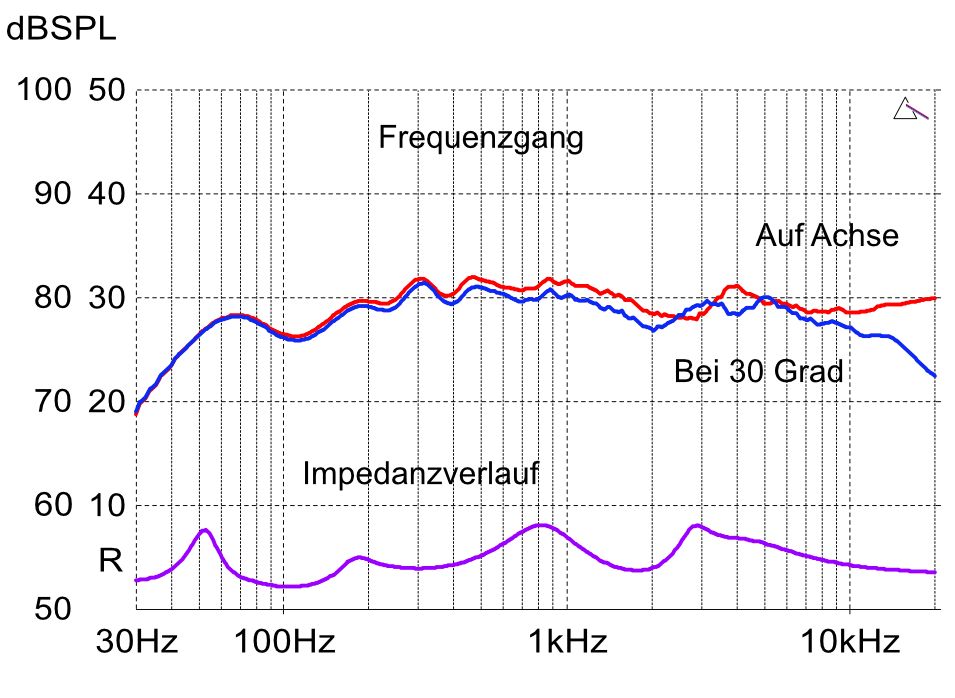
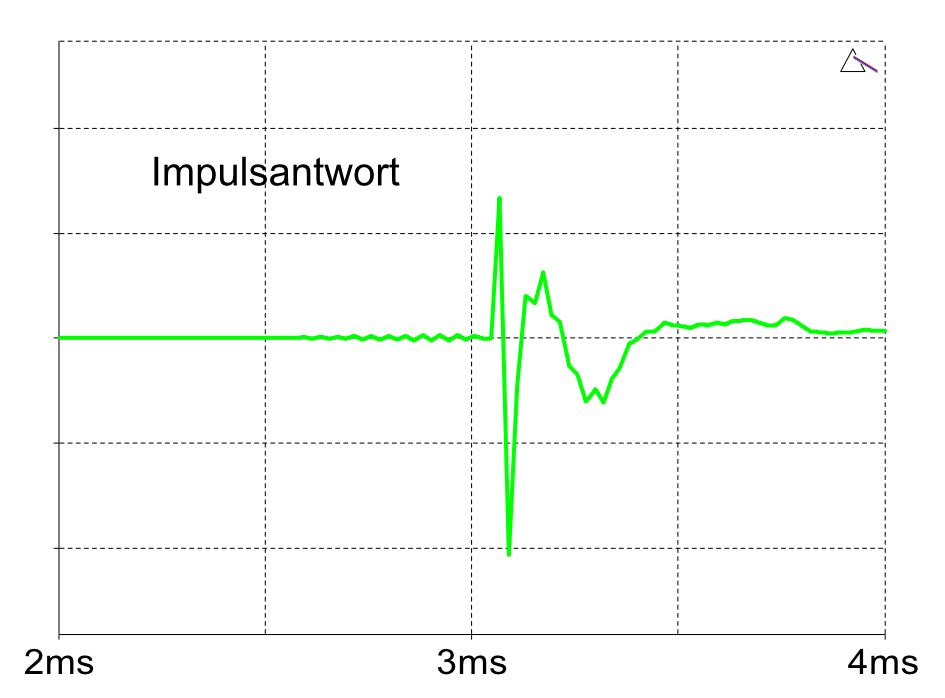
Measurement Values
| Rated impedance at DC: | 4 Ohm |
| Minimum impedance: | 2.37 Ohm |
| Minimum impedance at: | 97 Hz |
| Maximum impedance: | 8.28 Ohm |
| Maximum impedance at: | 2748 Hz |
| Sound pressure characteristic (2.83 V/m): | 84 dBSPL |
| Power for 94 dBSPL: | 36 W |
| Lower cut-off frequency (-3dBSPL): | 54 Hz |
| Distortion factor at 63/3k/10k Hz: | 0.223/0.034/0.096 % |
Stereo Test
Sound Level Floorstanding speaker: 96%
Price/Performance
Lab Comment
Frequency response adjustable, but fundamentally quite linear and reaching lower than our measurements show; power demand and impedance response with bass extension require powerful, load-stable amplifiers; very low distortion
Features
Three way bass reflex speaker with WBT-Bi-Wiring-NextGen-Terminal, plenty of room-condition-adjustments can be made to the bass range; height-adjustable spikes; water level; etc.
Test Devices
Turntable:
Transrotor Rondino
Streamer / CD Player:
T+A MP 3100
Preamps:
Octave HP 300 SE,
Accustic Arts Tube-Preamp II
Phono Preamps:
Nagra Classic Phono,
Audionet PAM G2
Power Amps:
Accustic Arts AmpII MK4,
T+A M200,
Krell Duo 300XD
Loudspeakers:
PMC fact.12 Signature,
B&W 801 D4,
DALI Epicon 2
Cables:
AudioQuest, Cardas,
HMS, Inak, Silent Wire,
Stockfisch, Supra
What We‘ve Heard
Richard Bargel: Dead Slow Stampede
The extraodinary blues musician from Cologne delivers a package of songs that are powerful and fittingly produced.

Beethoven/Argerich/Barenboim: Piano Concerto No2
Argerich full of passion and accuracy, accompanied by an expertly led orchestra of predominantly young artists.

 MAGAZINE
MAGAZINE